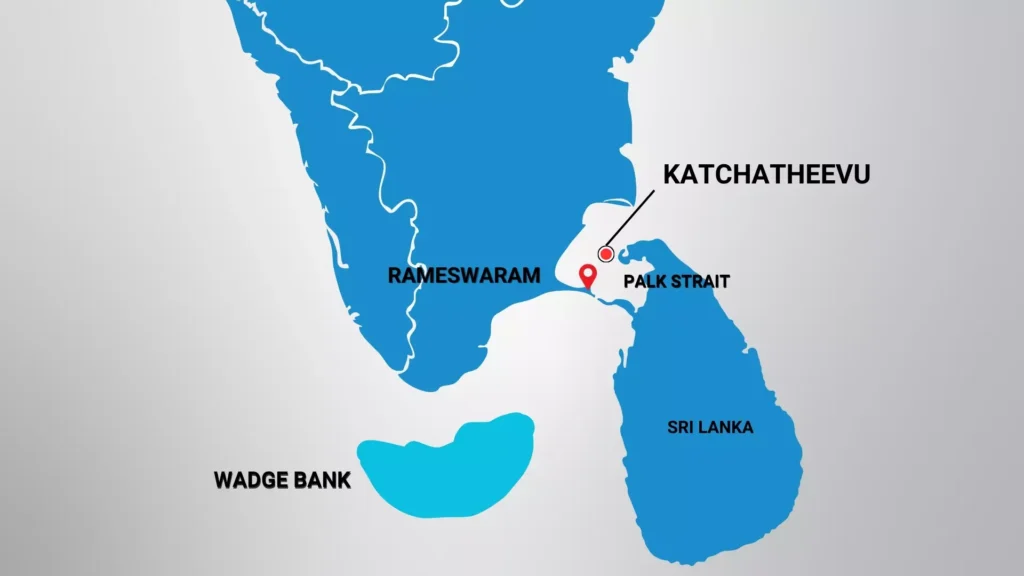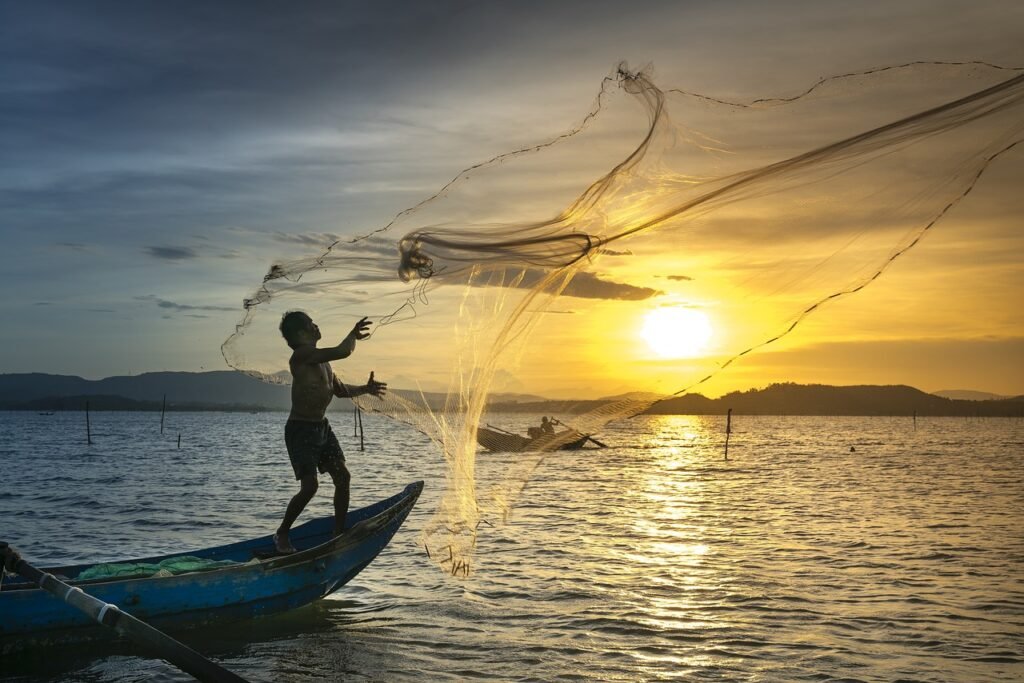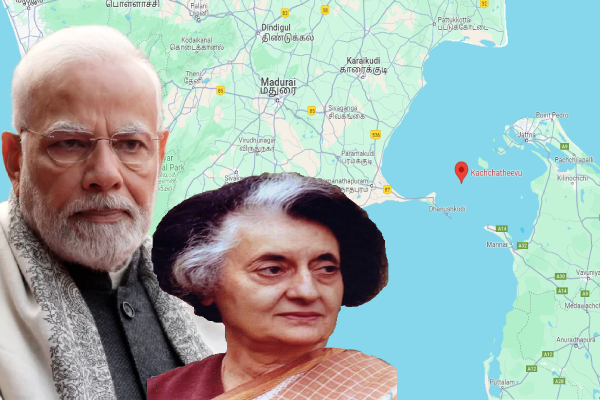The Katchatheevu Island issue between India and Sri Lanka came to limelight when PM Modi accused then PM Indira Gandhi of ‘callously giving away’ Karchatheevu island to Sri Lanka. This issue has gained political mileage just before the Lok Sabha elections in India and now we can expect this issue to be politicised more in Tamil Nadu.
This blog aims to delve into the historical context of the Katchatheevu island and its implications on India-Sri Lanka relations. Additionally, we will explore the potential consequences of India’s unilateral actions regarding this issue.
A Brief Overview of Katchatheevu Island
Katchatheevu is a minuscule island covering an area of just 285 acres, located in the Palk Strait between the southeastern coast of India and the northern coast of Sri Lanka. Despite its small size, the island holds immense religious, cultural, and strategic significance for both India and Sri Lanka.
Historically, the island was under the control of the kingdom of the Ramanand Raja, a Zamindar from 1975 to 1803 in Ramanathapuran in Madras Presidency during British rule. Additionally, the island houses 120-year-old St. Antony’s Church, a revered pilgrimage site for Catholics, drawing thousands of devotees from both nations every year for the annual feast of St. Antony.
The India-Sri Lanka Maritime Boundary Dispute
The sovereignty over Katchatheevu has been a subject of dispute between India and Sri Lanka for many years. The issue gained prominence during the colonial era when the British, who ruled both India and Ceylon (present-day Sri Lanka), demarcated maritime boundaries without consulting local communities.
In 1974, under the Indira Gandhi administration, India ceded Katchatheevu to Sri Lanka through a bilateral agreement, known as the “Agreement on the International Maritime Boundary Line.” This move was primarily aimed at fostering better relations between the two countries and resolving the maritime boundary dispute.
However, the decision sparked protests among Indian fishermen, particularly those from Tamil Nadu, who relied on the island’s waters for fishing. Indian fishermen were given access to Katchatheevu for rest, for drying fishing nets and for the annual St Anthony festival. The agreement did not specify the fishing rights of Indian fishermen.
In 1976, another agreement was signed to settle the maritime boundary dispute between India and Sri Lanka by giving sovereign rights over Wadge Bank near Kanyakumari to India. These agreements gave Katchatheevu to Sri Lanka and Wadge Bank to India.

Impact on India-Sri Lanka Relations
The transfer of Katchatheevu to Sri Lanka has had a lasting impact on the relations between the two countries. While the agreement was intended to strengthen ties, it also created tensions, especially concerning the rights of Indian fishermen to fish in the surrounding waters.
Fishermen from Tamil Nadu, who have traditionally relied on the fishing grounds near Katchatheevu, have often been detained and the incidence of firing on Indian fishermen by the Sri Lankan authorities for allegedly trespassing into their territorial waters are also reported. This issue has been a constant source of friction, leading to periodic diplomatic spats and protests in Tamil Nadu.
Efforts have been made by both governments to address the concerns of fishermen and mitigate tensions. Various agreements and mechanisms have been put in place to regulate fishing activities and ensure the safety of fishermen from both countries. However, the issue remains unresolved, and incidents of harassment continue to strain bilateral relations periodically.

Cost of unilateral action
Bilateral pacts or agreements between two nations are signed after intense discussions and thorough cost-benefit analyses. There is always a compromise, involving a bit of give-and-take in the negotiations. The two countries come to the table only when they are prepared to compromise on their positions; otherwise, discussions are bound to fail.
Any unilateral attempt by India to revise the pact raises doubts about India’s international credibility. For decades, India has been portrayed as the big bully in the subcontinent, although this image has faded in the last decade thanks to India’s ‘Neighbourhood First’ policy. However, with the Katchatheevu issue resurfacing, there is a high risk of India once again being portrayed as a big bully, particularly as Maldives’ pro-China President Muizzu recently stated in China that India is bullying Maldives in the region.
China could also exploit this issue to tarnish India’s image in its neighbouring countries. It may support a small-scale ‘India-Out’ campaign in Bangladesh and Mauritius. China’s growing influence in India’s neighbourhood and the Indo-Pacific region would receive a further boost, posing a threat to India’s geopolitical interests in the region.
Austin Fernando, a former Sri Lankan High Commissioner to India said, “It seems that this is only rhetoric for the election. But once they have said something like this. It is difficult for the government to get out of it after elections because BJP will win.” Therefore, Indian government has to be extremely cautious regarding India-Sri Lanka relations.
When asked about steps taken in this matter, Jaishankar said that “matter is sub judice,” as then Tamil Nadu CM Jayalalitha in 2008 filed a petition in the Supreme Court on this matter. This suggests that India will not take any unilateral action to take control of Katchatheevu island but may start renegotiation for fishing rights to Indian fishermen around the island.
Conclusion
The Katchatheevu Island remains a symbol of the complexities inherent in India-Sri Lanka relations. While the island’s transfer was aimed at fostering goodwill between the two neighbours, it has also been a source of contention, particularly concerning the rights of fishermen. As both countries continue to navigate these challenges, the need for constructive dialogue and cooperation becomes increasingly crucial in ensuring stability and prosperity in the region.



